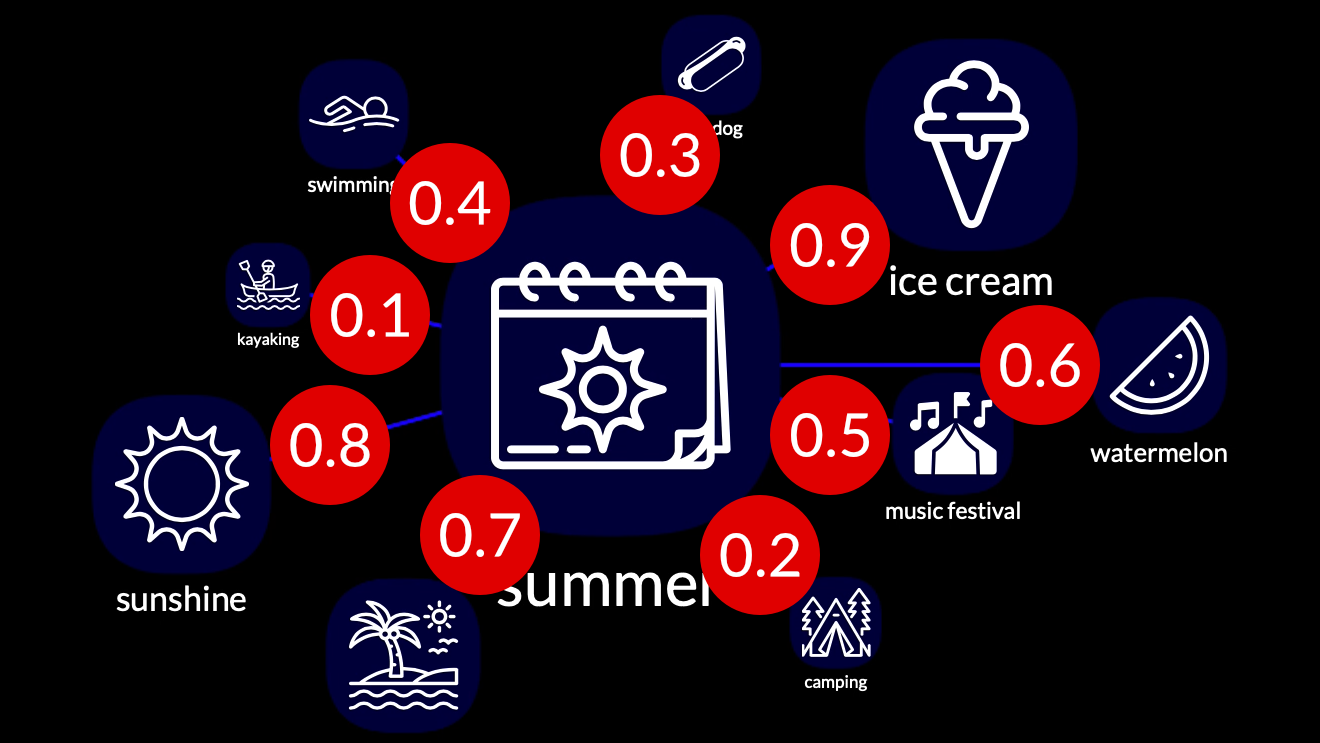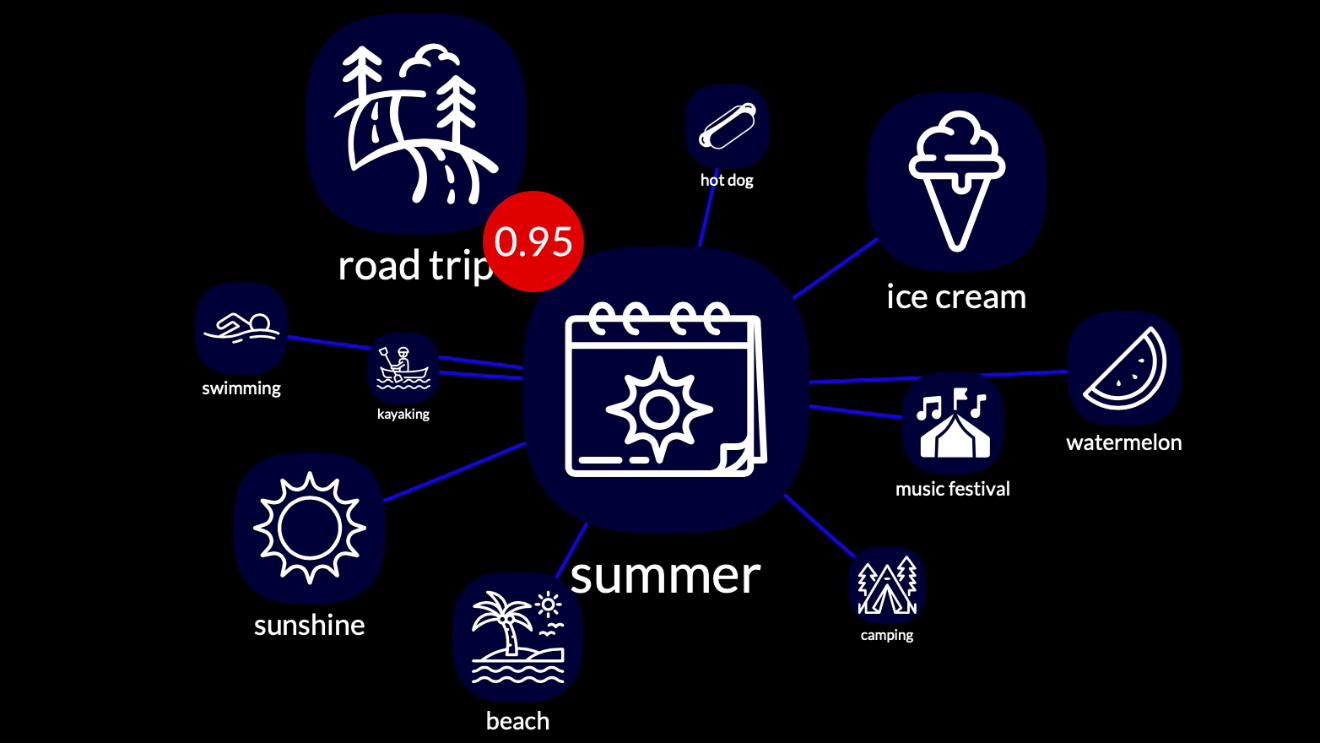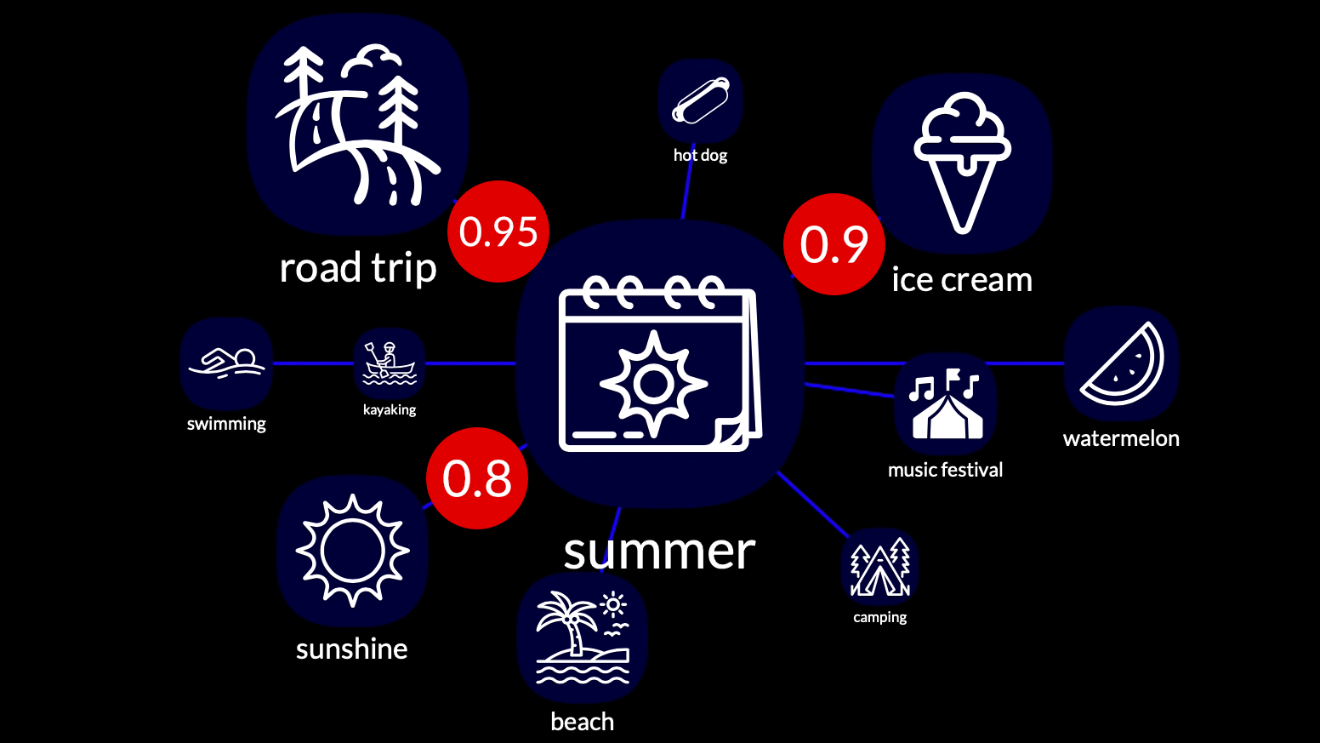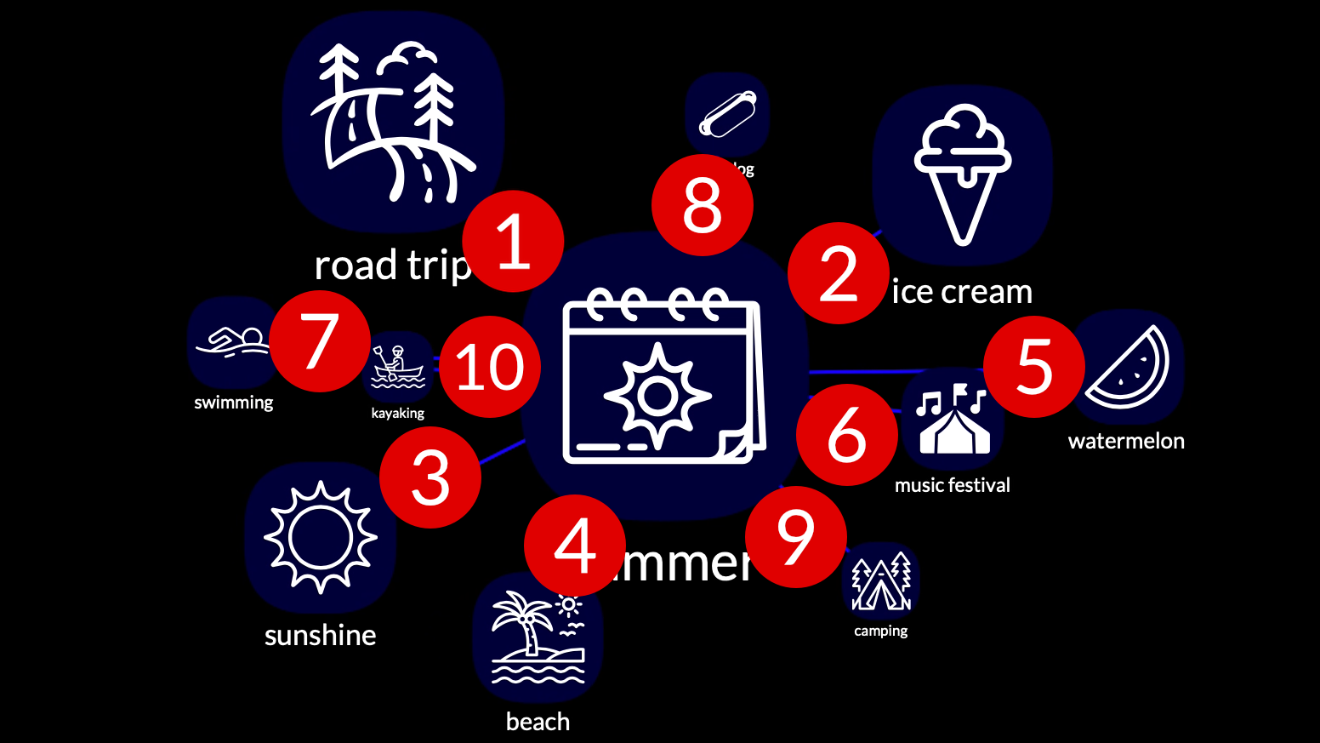You know how some connections in your mind are stronger than others?
Every time you think of summer, you think of ice cream.


Every time you’re asked to think of an animal, your mind goes to an elephant...

...never a bat, or a penguin, or an octopus.



Every time you think of Uncle Mike, you immediately think of that time in Marrakesh when... well, you know the story.


How does Open Web Mind capture this core characteristic of mind, that some connections are stronger than others?
You might think the answer’s obvious.
We simply assign a strength to each connection, right?
Wrong.
It turns out that assigning a strength to each connection won’t work.
Here’s what will.
—
Open Web Mind captures knowledge as a hypergraph of nodes, representing ideas, and edges, representing the connections between them.
If we’re to capture this core characteristic of mind, that some connections are stronger than others, then the edges between the nodes can’t be equal.
We’re going to have to recognize that some edges are more important than others.
Might isn’t right
We could do this by assigning a strength to each edge.
Here’s why that won’t work.
Imagine we assign a strength between 0 and 1 to each edge of the knowledge hypergraph.
Suppose you associate summer with 9 other things, from ice cream through sunshine to kayaking.

We could assign a strength to each of the 9 edges between the node representing summer in your mind and the 9 other nodes representing those 9 other things. We might give the strongest association, with ice cream, a strength of 0.9, the next strongest, with sunshine, a strength of 0.8, and so on down to the weakest, with kayaking, which we might give a strength of 0.1.

So far, so good.
However, your mind isn’t static. You might form a new association with summer that’s even stronger than these old associations. With road trips, for instance. What strength would we give the edge between the node reperesenting summer and the node representing road trips? 0.95, maybe?

But what does that mean? What does it mean that the connection to road trips is only 0.05 stronger than the connection to ice cream, but the connection to ice cream is fully 0.1 stronger than the connection to sunshine?

And how do all these strengths size up with the strengths of connections in other minds? Open Web Mind isn’t just one mind, it’s a billion minds. If the strength of the edge between summer and ice cream is 0.9 in your mind but only 0.5 in my mind, what does that mean? How do we compare these strengths? How do we combine these strengths?
If the connection between summer and ice cream is really, really important to you, can you give it a strength of 0.999 in your mind to counter the lesser strength of 0.5 in my mind? If all the connections in your mind are really, really, really important to you, can you give them all strengths of 0.999 or more, in an attempt to overwhelm all the connections in my mind?
There are no answers to these questions.
These numbers are meaningless.
Assigning a strength to each edge won’t work.
Pecking order
What will work is ranking the edges from each node.
We can simply list the connections, from the strongest to the weakest.
For summer, the list would begin with ice cream, followed by sunshine, and so on down to kayaking.
Or, to put it in terms of rank, from the node representing summer, the edge to the node representing ice cream has rank 1, the edge to the node representing sunshine has rank 2, and so on down to the edge to the node representing kayaking, which has rank 9.

Listing the connections, from the strongest to the weakest, doesn’t seem so different from assigning strengths to the edges, does it? But it is different.
It solves the problem of meaningless numbers. How much stronger is the association with ice cream than the association with sunshine is an unanswerable question. But is the association with ice cream stronger than the association with sunshine is entirely answerable. Either it is or it isn’t.
It solves the problem of non-static minds. When you form a new association between summer and road trips that’s even stronger than all the old associations, the edge representing the new connection becomes the rank 1 edge from summer, and every other edge is demoted: ice cream to rank 2, sunshine to rank 3, and so on.

And it solves the problem of the melding of minds.
It’s not possible to compare or combine strengths between different minds, but it is possible to compare and combine ranks. If the rank of the edge between summer and ice cream is 1 in your mind but 5 in my mind, it simply means that there’s no stronger connection in your mind, whereas there are several stronger connections in my mind.
You can game strengths, but you can’t game ranks. If you’re simply listing the connections with summer in your mind, from the strongest to the weakest, there’s no way you can overwhelm the connections in my mind. In each of our lists, there’s only one rank 1 edge – the first edge in the list – only one rank 2 edge – the second edge in the list – and so on.
These ranks are meaningful: in my mind, the rank 1 edge from a node represents a stronger connection, in my mind, than the rank 2 edge from the same node.
How does Open Web Mind capture the core characteristic of mind, that some connections are stronger than others?
By ranking the edges from each node in each mind.
Wait, but how?
Which begs a question...
How do minds decide these rankings?
How did your mind come to hold that the connection between summer and ice cream...


...is stronger than the connection between summer and sunshine...


...while my mind holds that it’s the other way around?
I’ll tackle this crucial question of how we rank edges in Open Web Mind in my next article.
It’ll take us to the even deeper question of how we make connections in our minds.







